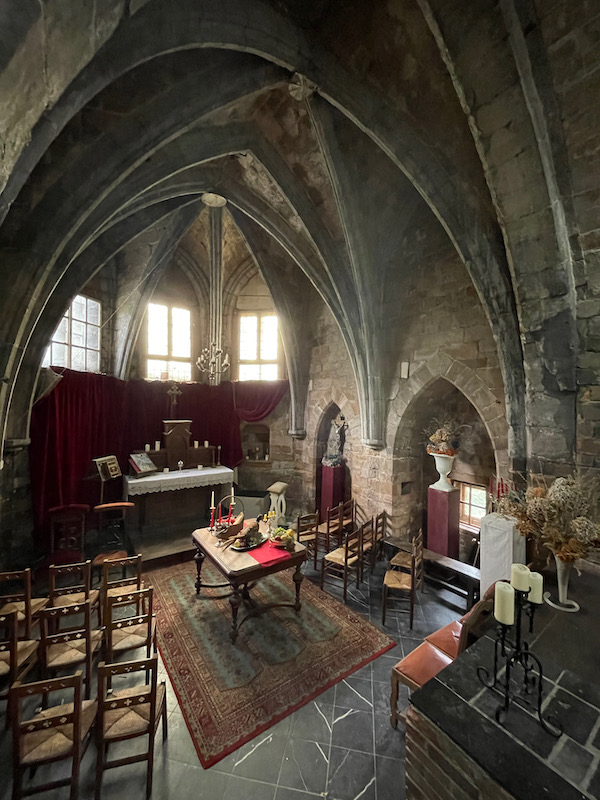Our Blog - Summer 2024 Trip - Chateau Havré, Belgium
Chateau Havre is just outside of town. The origin of this castle is very old with the first documented date around 1226. The same family owned it from 1255, when Ida de Mons married Englebert d'Enghien, until 1423. Then it was owned by the the families of Dunan, Longueville and Croÿ. After a peaceful time, there were sieges against it in 1578 and then a fire in 1579 completely destroyed it, leaving only the walls. It was restored in the early 17th century but then gradually abandoned after the French Revolution when it was sold as national property.
In 1930, a large part of the castle collapsed, transforming the building into "historical ruins". It was taken over by a non-profit association in 1979 that is attempting to save and restore the chateau. The day we were there, some people were decorating for a wedding party.
We took Lucy for a nice walk around the chateau in the grounds, grabbing a few pictures as I went around. The structure is a bit interesting, as there is the main building and then 2 side buildings, with a moat that goes all the way around.
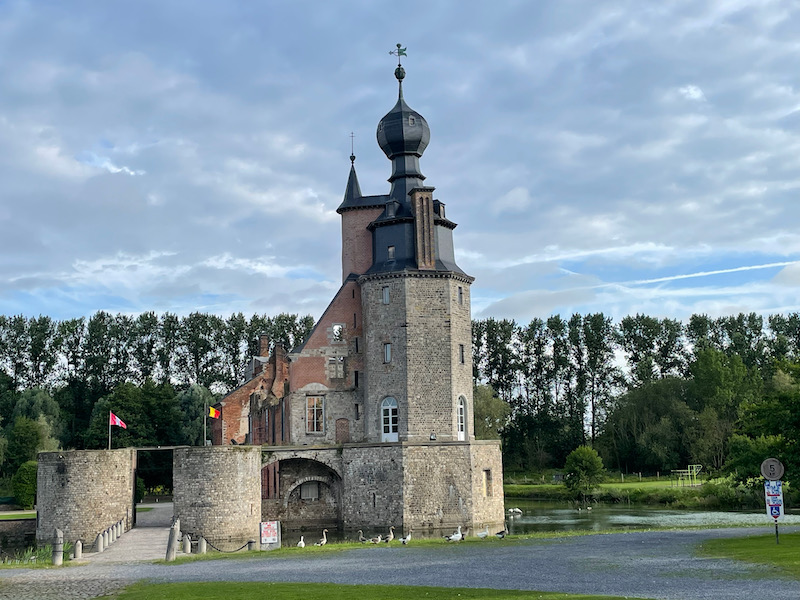
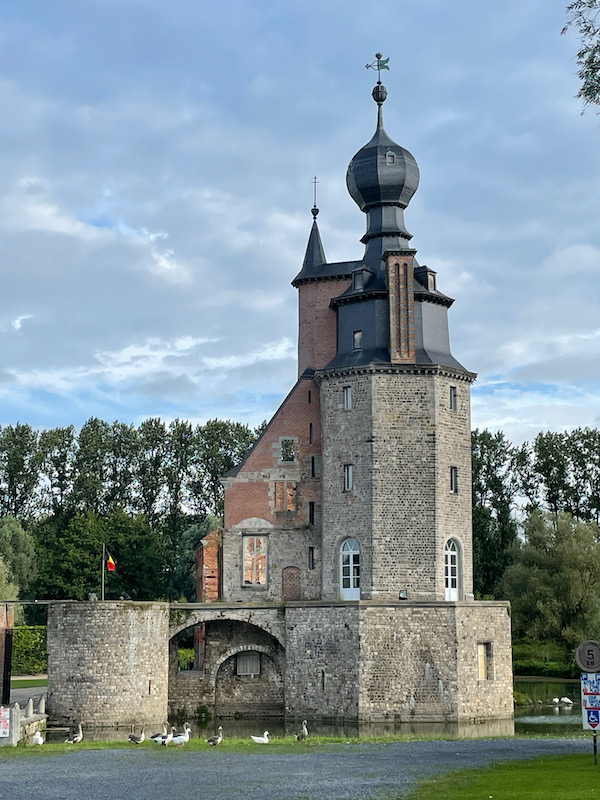
You can definitely see where parts of the building are still "missing", with empty window openings or ones that have "fake" windows.
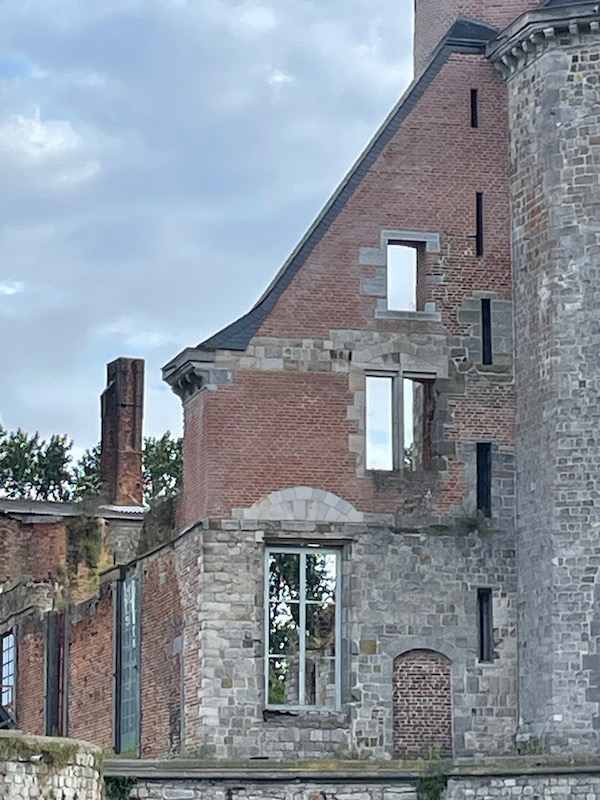
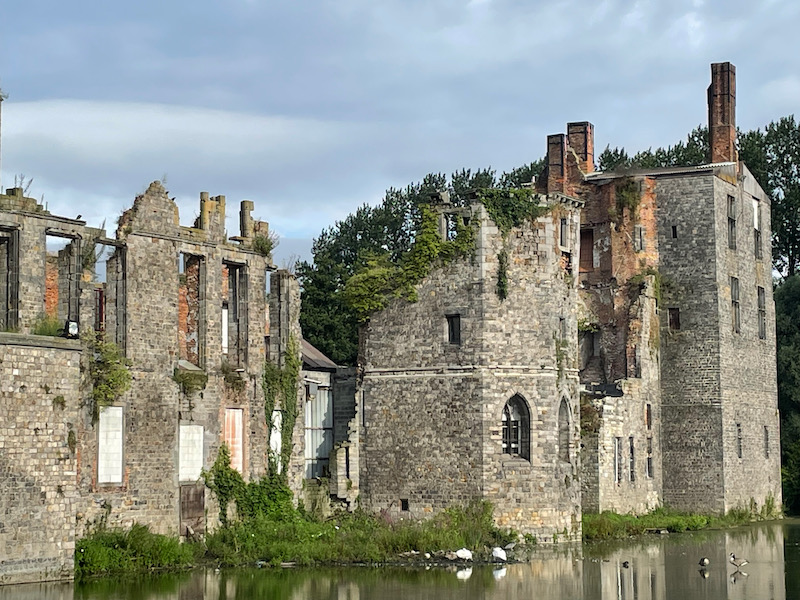
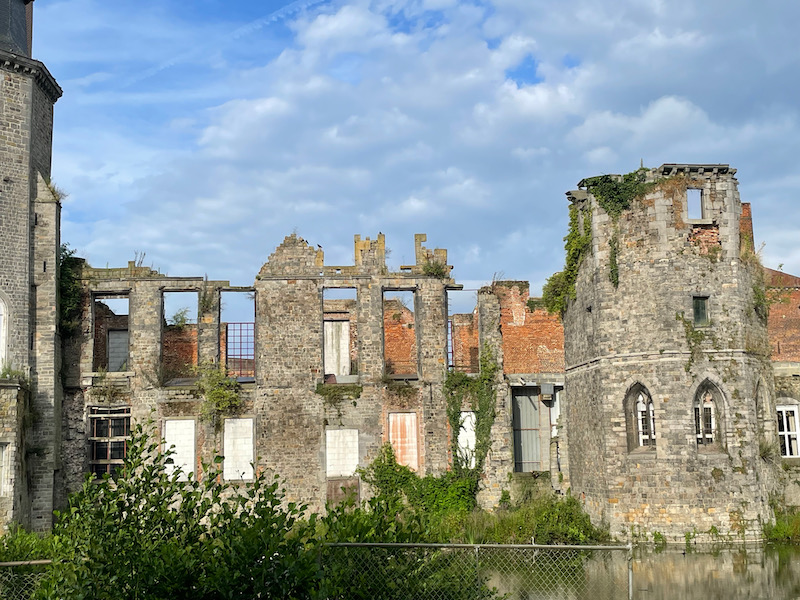
The main tower has been restored but you can see the middle octagonal tower that is only a story-and-a-half tall. That tower, with the Gothic windows on the ground floor, was the chapel.
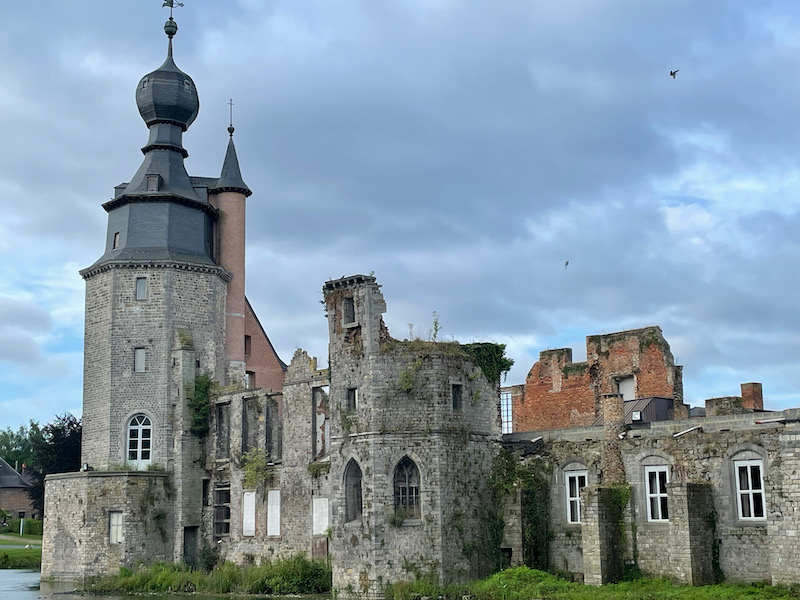
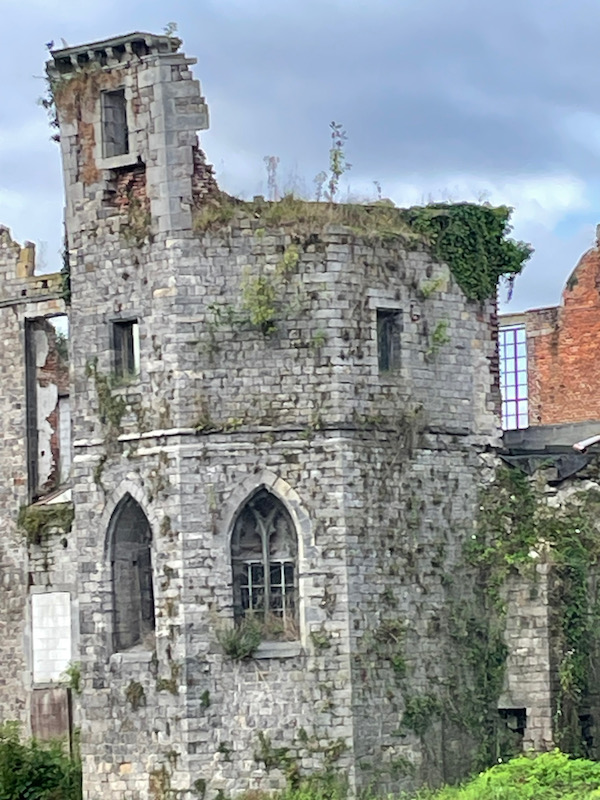
We then started our private walking tour. We started in one of the separate buildings, which was used as a guard tower during one part of the history of the chateau. The rooms were setup quite nicely as a little museum, that talked about the history of the chateau and the owners. It also
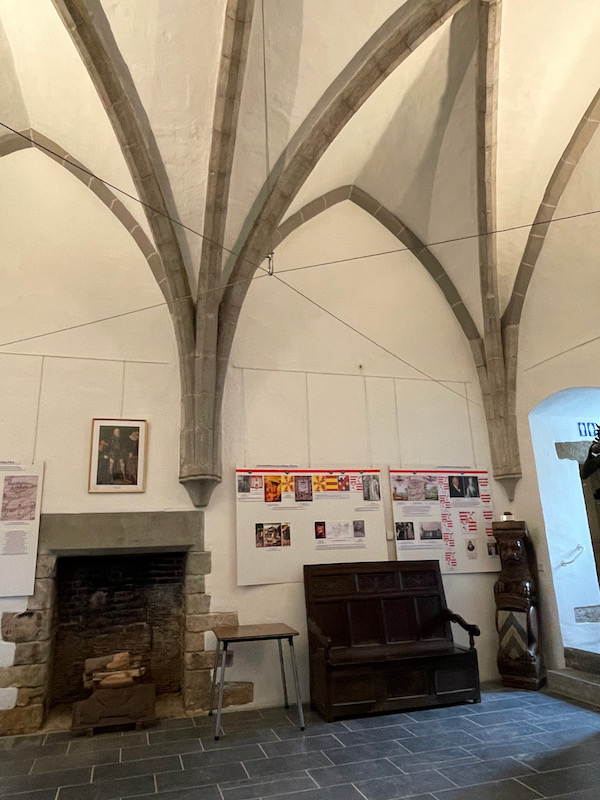
These two pieces of wood are what are called "contrefiches", which are ceiling struts. They would have been at the top of the walls, supporting the large oak beams of the ceiling. These sculpted wooded pieces were added by the Croÿ family.
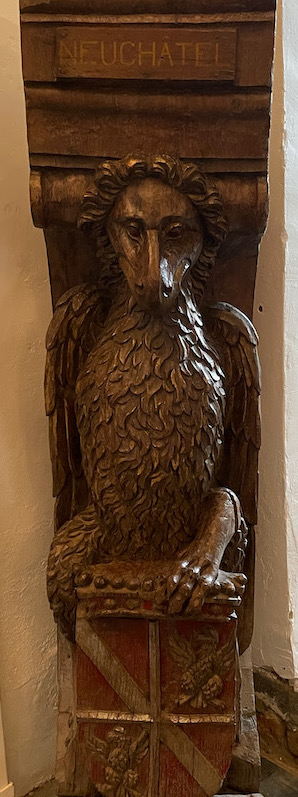
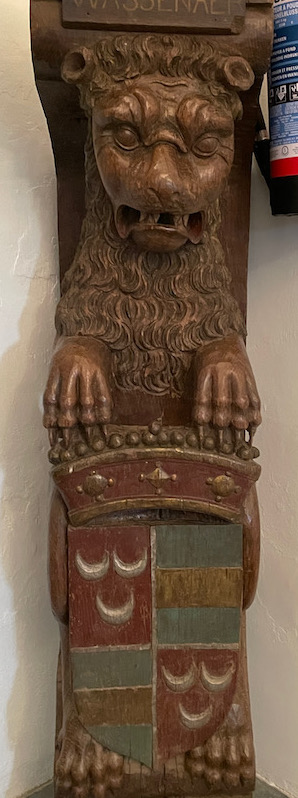
This is an old picture that shows what it looked like before the the French Revolution and its deterioration. Pretty impressive for non-royalty!
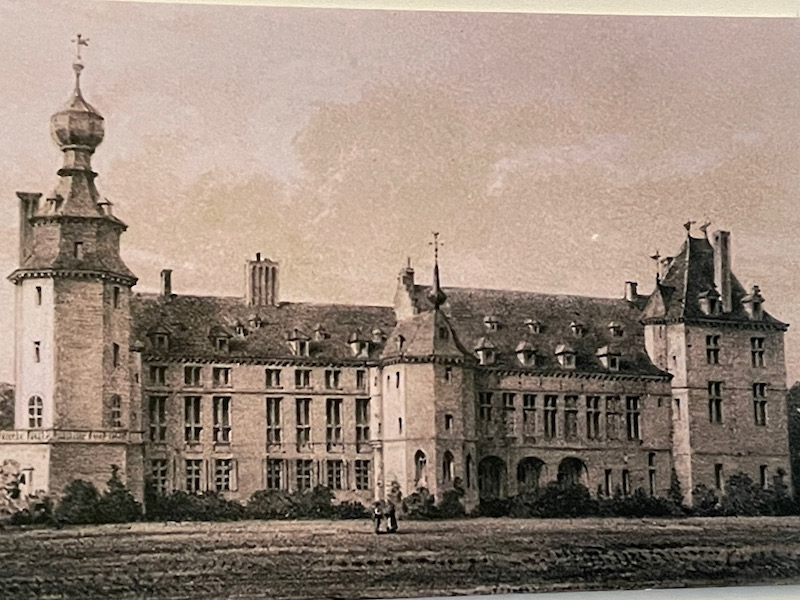
Then we headed to the main building (or what is left), and this is the part that they are doing quite a bit of work on currently, and also is what they rent out to help fund the renovations. The 2nd picture may be difficult to understand without any context. One of the big things that occurred at the chateau were hunting parties. This was partly amicable and partly a way for the owners to "boast" of their wealth and connections. When an important person was successful in the hunt, a wooden head-less statue would be mounted with their coat-of-arms. Note that it is head-less ... the head was always removed and taken home by the hunter. By showing the coat-of-arms, it was a way to boast of who had been there before.
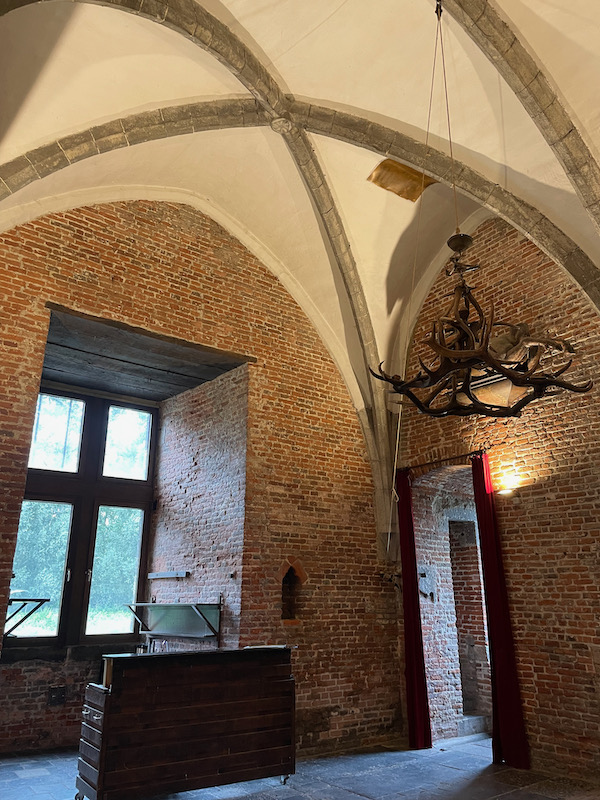
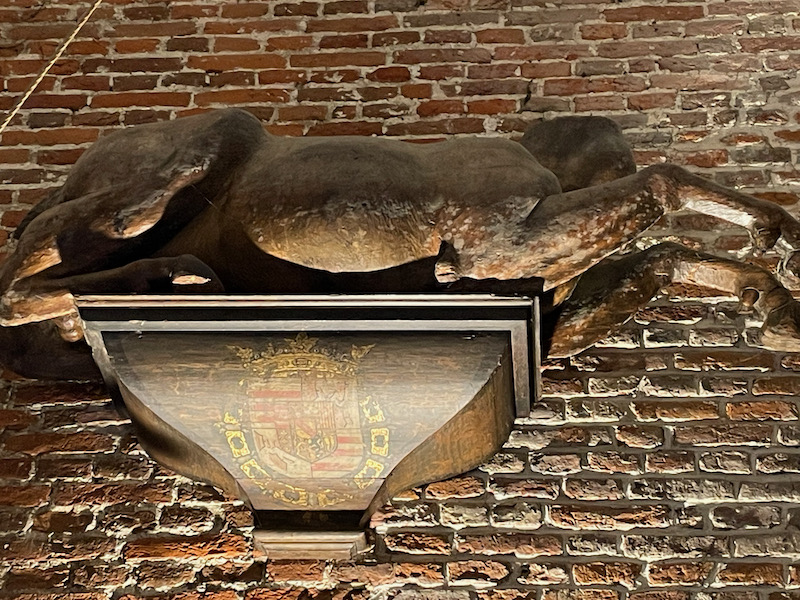
Then up to the "room". The owner of the chateau would basically live in this room the majority of the day. He would sleep here, then the table on the right is the dining room, and the desk on the left would be the office. Being the Lord of the local lands, he would meet with people in the local area here as well, collecting taxes.
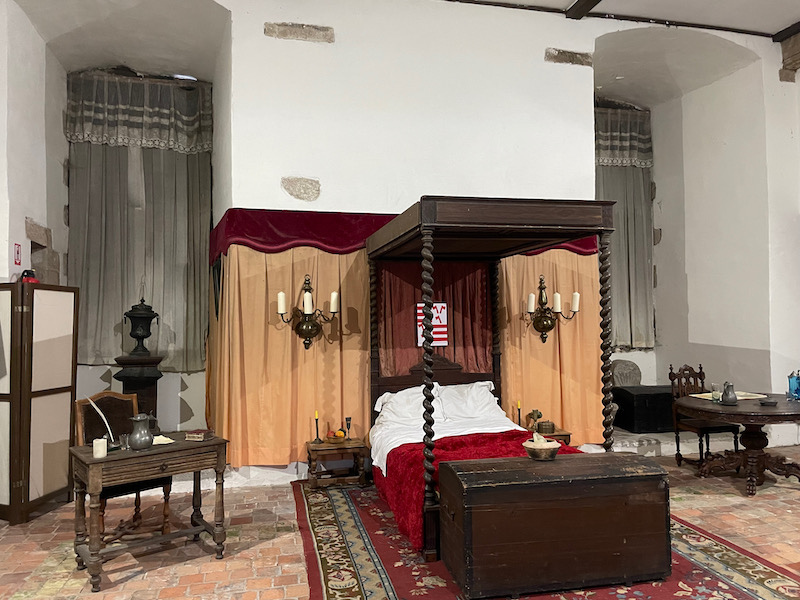
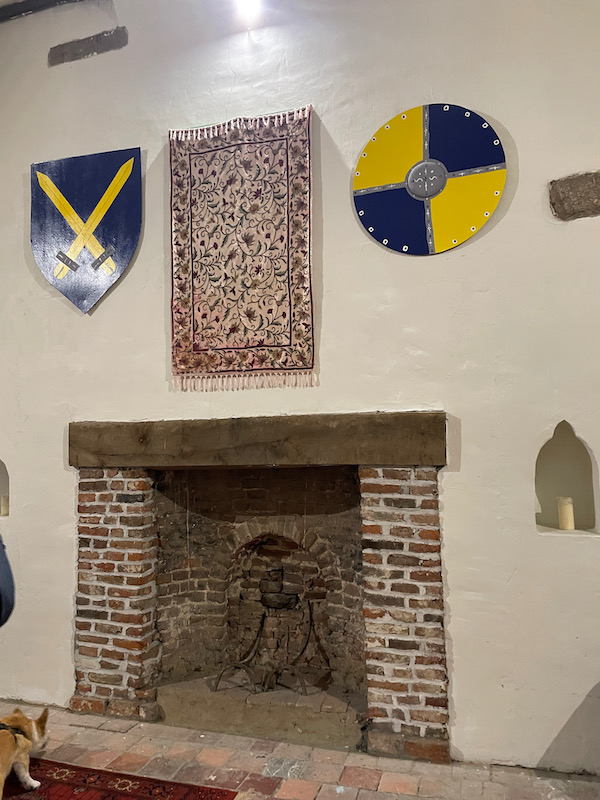
Here is a picture of the Chapel, that we saw from the outside. The 3 windows that you see are the Gothic-pointed windows on the ground floor.
